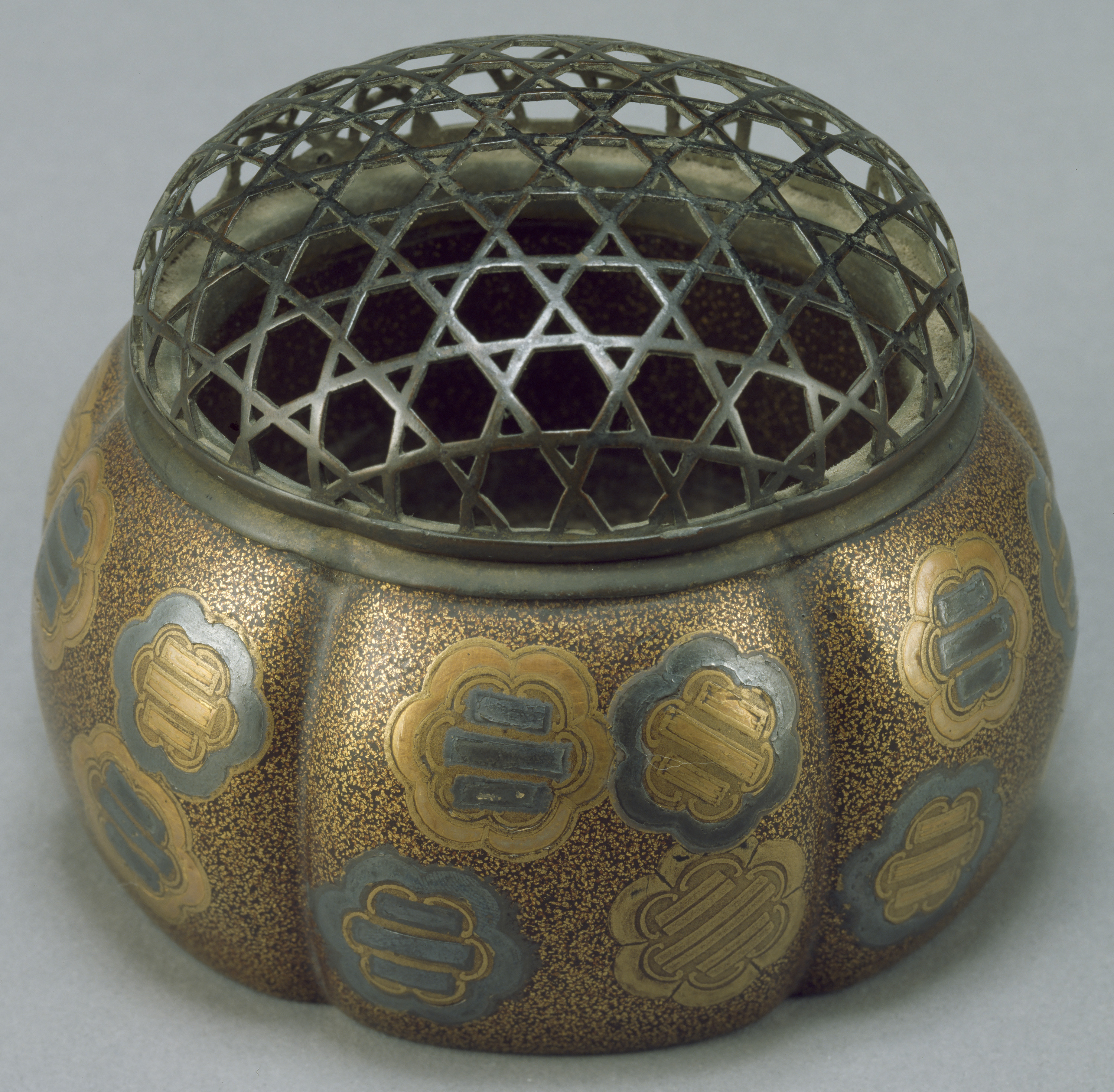- TOP
- Akoda Incense Burner with Scattered Three-striped Quince Crests and Flowers in Makie
Overview
Akoda Incense Burner with Scattered Three-striped Quince Crests and Flowers in Makie
- Museum No.
- HK92-34
Showing 1-6 of 1
| Title | Akoda Incense Burner with Scattered Three-striped Quince Crests and Flowers in Makie |
|---|---|
| Designation | |
| Artist | |
| Category | Lacquerware(H) |
| Country | Japan |
| Period | Edo |
| Century | 17th |
| Year | |
| Quantity | |
| Materials | |
| Dimensions | Diameter 10.6cm Height 8.0cm |
| Inscription by | |
| Signature/Seals Etc | |
| Donor | Tamura Shizuko |
Included Works

HK92 Cosmetic Set with Plum and Cherry Blossoms in Makie
Cosmetic Set with Plum and Cherry Blossoms in Makie
HK92-1 Twelve-Piece Toiletry Case with Mandarin Orange, Arabesque, and Scattered Crests in Makie
Twelve-Piece Toiletry Case with Mandarin Orange, Arabesque, and Scattered Crests in Makie
HK92-2 Comb Stand with Ivy and Arabesques in Makie
Comb Stand with Ivy and Arabesques in Makie
HK92-3 Portable Comb Box with Surf Clams in Makie
Portable Comb Box with Surf Clams in Makie
HK92-4 Teeth Blackening Utensil Box with Scattered Three-Striped Circle and Bellflower Crests in Makie
Teeth Blackening Utensil Box with Scattered Three-Striped Circle and Bellflower Crests in Makie
HK92-5 Cosmetics Box and Mirror Stand Set with Calabashes in Makie
Cosmetics Box and Mirror Stand Set with Calabashes in Makie
HK92-6 Cosmetics Case with Phoenixes and Arabesques in Makie
Cosmetics Case with Phoenixes and Arabesques in Makie
HK92-7 Small Red-cornered Toiletry Case with Chrysanthemums, Arabesques, Chests, and Cart Wheels
Small Red-cornered Toiletry Case with Chrysanthemums, Arabesques, Chests, and Cart Wheels
HK92-8 Large Red-cornered Toiletry Case with Flowing Water and Globeflowers in Makie
Large Red-cornered Toiletry Case with Flowing Water and Globeflowers in Makie
HK92-9 Red-cornered Toiletry Case with Pines and Mandarin Oranges in Makie
Red-cornered Toiletry Case with Pines and Mandarin Oranges in Makie
HK92-10 Small Box with Chrysanthemum in Makie
Small Box with Chrysanthemum in Makie
HK92-11 Box with Shokko Design in Makie
Box with Shokko Design in Makie
HK92-12 Box with Scattered Peacock Feathers in Makie and Mother-of-Pearl Inlay
Box with Scattered Peacock Feathers in Makie and Mother-of-Pearl Inlay
HK92-13 Comb Stand with Flowing Water and Maples in Makie
Comb Stand with Flowing Water and Maples in Makie
HK92-14 Small Chest of with Paulownia and Arabesques in Makie
Small Chest of with Paulownia and Arabesques in Makie
HK92-15 Comb Stand Carved with Birds and Animals and Painted with Lacquer
Comb Stand Carved with Birds and Animals and Painted with Lacquer
HK92-16 Armrest with Three-leafed Hollyhock Crests, Young Pines, and Arabesques in Makie
Armrest with Three-leafed Hollyhock Crests, Young Pines, and Arabesques in Makie
HK92-17
This object may be one within a set or the title of a set. To see all objects in the set, perform a Category Search by the Museum Number below, entering numerals only before the hyphen.







Because the six-lobed form of this incense burner resembles that of an akoda melon, it is referred to as an "akoda incense burner." In the practice of the incense ceremony (J., kôdô), it is used to carry small charcoals into the room where the ceremony will be performed. However, originally, an incense burner such as this was used in the Heian period (794-1185) to perfume a room or their clothing by burning incense. Usually, the incense burner was covered with a grill made of metal.
This example is fitted with a basket-weave cover executed in pierced bronze. The body itself is made of wood, the rim of which is lined in bronze to receive the cover. A second layer of flat gold filings is applied over a ground of black lacquer, on top of which are arranged crests of Japanese quince blossoms enclosing the three strokes that make up the character for "three". These crests have been applied in flat sprinkled makie composed of flat gold and greenish gold powder and thin cut strips of gold and silver. The interior and bottom are plainly decorated with flat gold filings and no pattern. The design on the body consists only of quince blossoms, but the variety of metals and decorative techniques give to each crest a different feeling. This complexity and the random distribution of the crests over the surface contribute to sublime design of this incense burner.
Japan-Edo